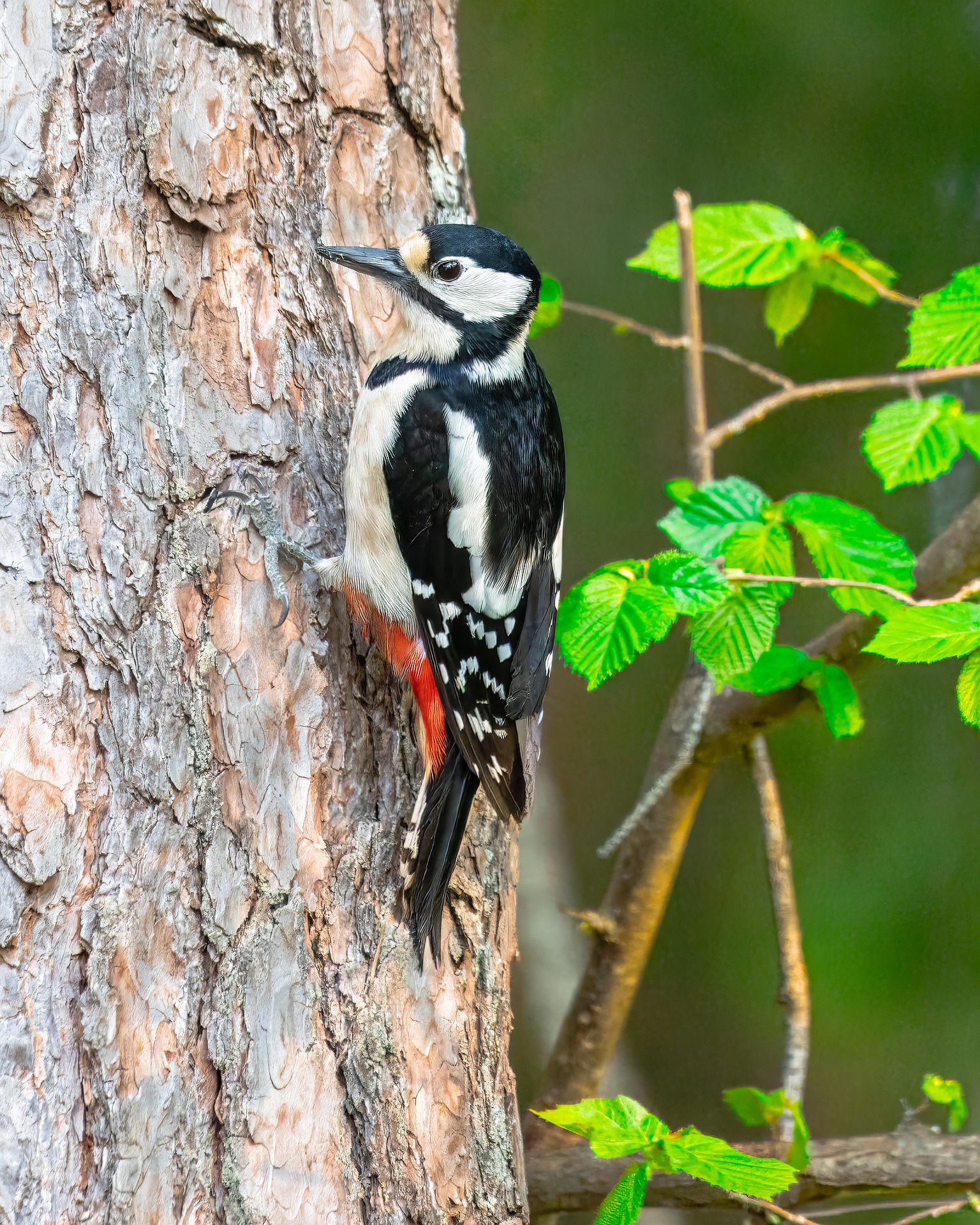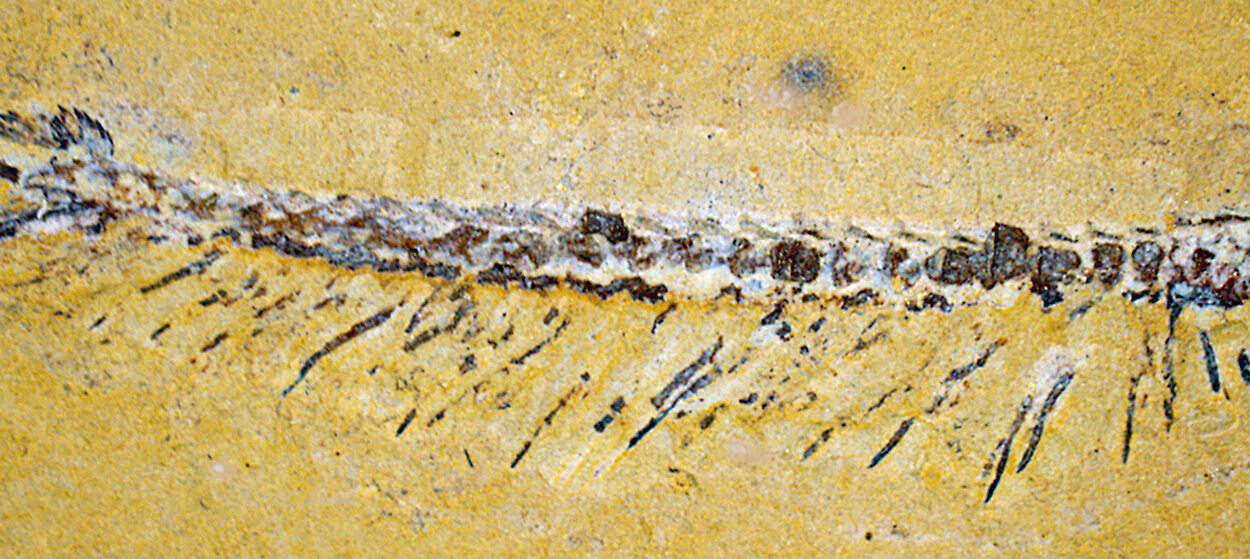In the forests of North America, a rhythmic drumming echoes through the trees. To most of us, it’s just another woodland sound—a bird tapping on bark. But to scientists, that familiar beat hides an astonishing feat of biology. The woodpecker, weighing barely more than a few ounces, can slam its beak into solid wood with a force equivalent to hundreds of times the pull of gravity—up to 400g—and emerge utterly unscathed.
This isn’t brute force without finesse. The woodpecker’s drumming is a masterpiece of coordination, strength, and control. Each strike is powered by an intricate choreography of muscles from head to tail, all moving in perfect harmony. Recent research published in the Journal of Experimental Biology reveals just how extraordinary this coordination truly is: woodpeckers literally transform themselves into living hammers.
Turning the Body into a Hammer
At first glance, the act of a woodpecker hammering into a tree might seem simple. But under the surface, it’s a symphony of muscular precision. The research team—Nicholas Antonson, Matthew Fuxjager, Stephen Ogunbiyi, Margot Champigneulle, and Thomas Roberts from Brown University, along with Franz Goller from the University of Münster—set out to uncover exactly how woodpeckers pull off this biomechanical wonder.
To do so, they gently captured eight wild downy woodpeckers and filmed them over three days using high-speed video. The footage captured every detail—the twitch of a feather, the flex of a muscle—as the birds drilled into hardwood. Meanwhile, electrical sensors measured muscle activity in the birds’ heads, necks, tails, and legs. By analyzing these signals, the scientists could map the precise timing and intensity of each muscle’s contribution to every strike.
What they discovered was astonishing: before each blow, the woodpecker braces its entire body, stiffening its muscles from the neck down to the tail. The hip flexor and front neck muscles work like pistons, propelling the bird’s head forward with perfect timing, while the neck, abdominal, and tail muscles lock the rest of the body into a rigid line of support. It’s as if the bird transforms itself into a single, solid striking tool—head, body, and beak acting as one.
The Perfect Balance of Power and Control
Woodpeckers aren’t just smashing their heads into trees blindly. They’re precise and adaptive, adjusting the strength of each impact depending on the purpose of their pecking. When they need to drill deep into wood to find insects or create nesting holes, the hip flexor muscles contract more powerfully, delivering harder strikes. But when they’re tapping softly—perhaps to communicate with another bird—they ease off, producing gentler, rhythmic beats that echo like Morse code through the forest.
This level of control demands exquisite timing. Imagine swinging a hammer hundreds of times per minute, adjusting the force of every blow while keeping perfect aim. For the woodpecker, this is daily life. It’s a display not only of strength but of balance, coordination, and sensory feedback—skills refined over millions of years of evolution.
Breathing Like an Athlete
The study uncovered another remarkable feature: woodpeckers don’t just brace their muscles—they breathe in sync with every strike. Much like professional athletes who grunt as they exert force, woodpeckers exhale sharply at the exact moment their beak meets wood. This powerful exhalation stabilizes the core muscles, increasing the bird’s control and reducing strain on the body.
Nicholas Antonson, one of the researchers, explains that this type of breathing pattern “generates greater co-contraction of trunk musculature,” meaning that the act of exhaling helps the bird’s torso muscles tighten together, amplifying stability. It’s a natural way to protect the body during extreme exertion—just as tennis players grunt to strengthen their swings or weightlifters exhale at the peak of a lift.
Even more astonishing, when woodpeckers tap rapidly—up to 13 strikes per second—they still manage to synchronize each breath with each hit. Between every rapid blow, they take a mini-inhale lasting just 40 milliseconds. It’s a rhythm of breath and motion so fast and coordinated that it borders on the mechanical, yet it’s entirely organic.
The Anatomy of a Master Drummer
The woodpecker’s anatomy is a marvel of evolutionary engineering. Every part of its body has adapted to withstand and channel the tremendous forces of its lifestyle. Its skull is thick but flexible, with spongy bone structures that absorb shock. The beak, made of tough keratin, distributes impact evenly while protecting the delicate brain behind it.
Yet, as the Brown University researchers showed, what truly makes the woodpecker so powerful isn’t just its bones—it’s the teamwork of its muscles. Before each strike, the bird tilts its head back and braces with three muscles at the base of the skull and neck. Its abdominal muscles tense, creating a rigid link between head and hips, while the tail muscles flex to anchor the body against the tree. The tail acts like a stabilizing prop, much like a third leg, absorbing part of the recoil from each strike.
In essence, the entire body becomes a living, breathing hammer—flexible yet firm, dynamic yet stable.
More Than Just Drumming
To us, a woodpecker’s drumming might sound repetitive, but to the birds, it’s a sophisticated language. Each rhythm and frequency conveys information—territorial warnings, mating calls, or communication between partners. The difference between a drilling strike and a communicative tap lies in the subtle modulation of muscle tension and breathing control.
When two woodpeckers communicate across a forest, their rhythmic exchanges create a kind of percussion dialogue, echoing through the trees like music. Behind each tap lies an intricate balance of biomechanics and instinct, turning simple sound into sophisticated behavior.
Lessons from Nature’s Engineer
The woodpecker’s abilities have long fascinated scientists and engineers, inspiring designs for shock-absorbing helmets, drilling tools, and even space technology. Understanding how such a small creature can endure forces that would crush a human skull helps researchers develop new approaches to protecting against impact injuries.
The discovery that woodpeckers coordinate their breathing with their movements adds a new dimension to this inspiration. It shows how deeply integrated biology can be—how even breathing, something so automatic, can become part of a complex mechanical performance. This insight might even influence sports science, helping athletes learn to harness breathing to improve stability and power, just as woodpeckers do naturally.
A Symphony in Motion
When you watch a woodpecker at work, you’re not just seeing a bird hunting for insects—you’re witnessing a symphony of motion. Every muscle, every breath, every heartbeat is part of a perfectly timed rhythm. The bird braces, exhales, strikes, recoils, and repeats, up to a dozen times each second, without faltering. Its body moves like an extension of the forest itself, blending sound, motion, and purpose into a seamless act of survival.
There’s poetry in its precision. What seems simple from a distance is, up close, a triumph of natural design—a reminder that even the smallest creatures carry within them extraordinary complexity.
The Beat Goes On
The next time you hear a woodpecker drumming on a tree, pause for a moment. Beneath that sound lies a story of strength and adaptability, of nature’s ability to shape perfection through evolution. These birds are living testaments to the harmony between physics and life—a balance of force and finesse, rhythm and breath.
Woodpeckers, in their relentless tapping, teach us something profound: true power doesn’t come from sheer strength alone, but from the unity of body, mind, and motion. In their tireless rhythm, they echo the heartbeat of the natural world—a pulse that reminds us of the deep, unbreakable connection between life and the forces that shape it.
So while their grunts may be drowned out by their own drumming, their message still rings clear through the trees: perfection, even in the smallest creature, is the sound of nature in motion.
More information: Neuromuscular coordination of movement and breathing forges a hammer-like mechanism for woodpecker drilling, Journal of Experimental Biology (2025). DOI: 10.1242/jeb.251167






